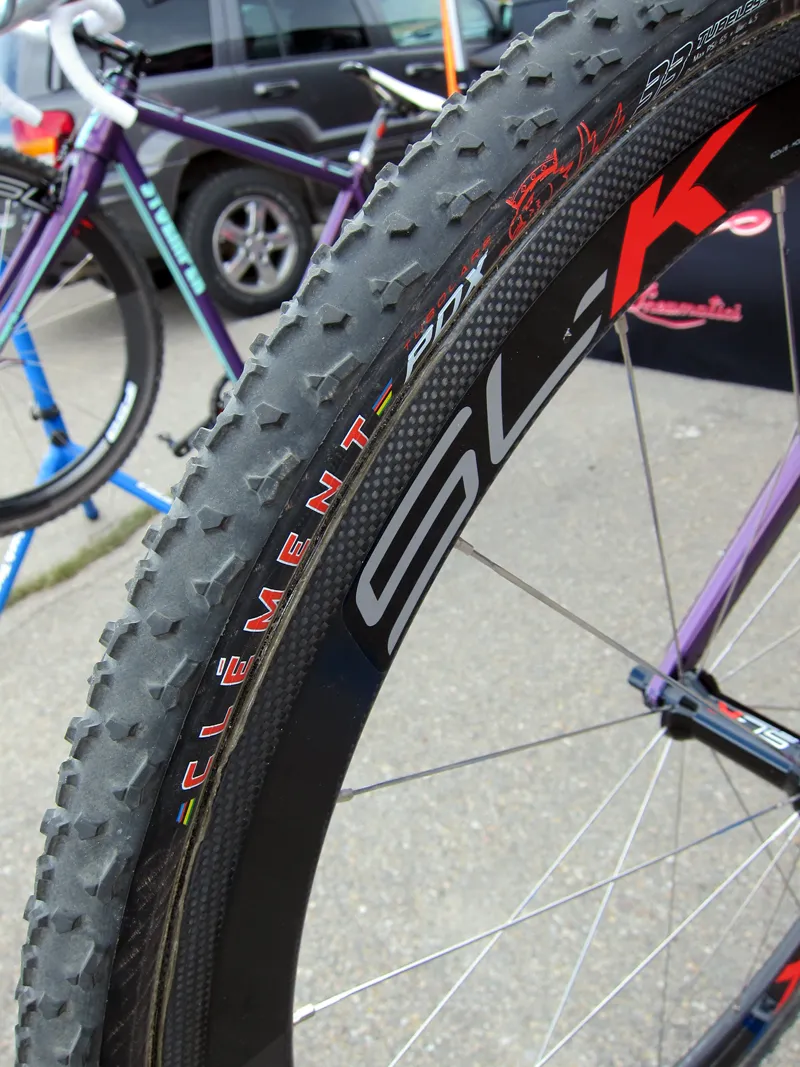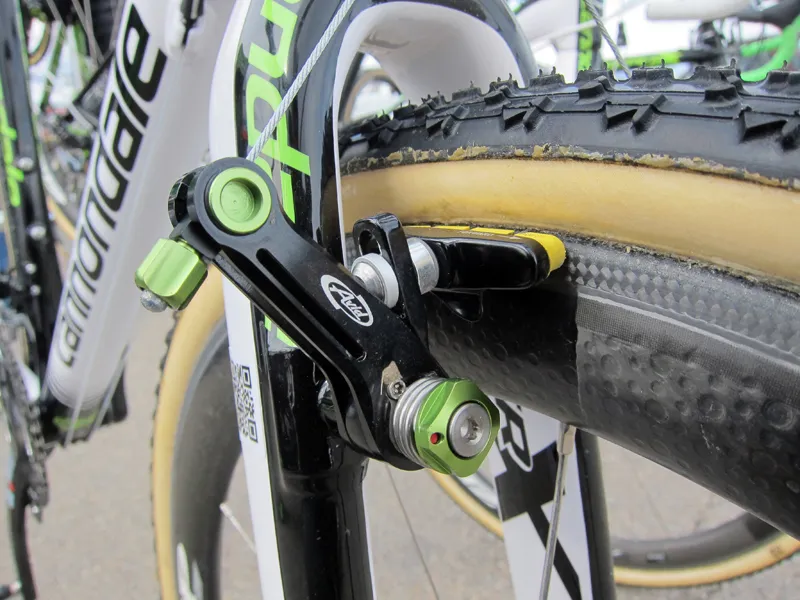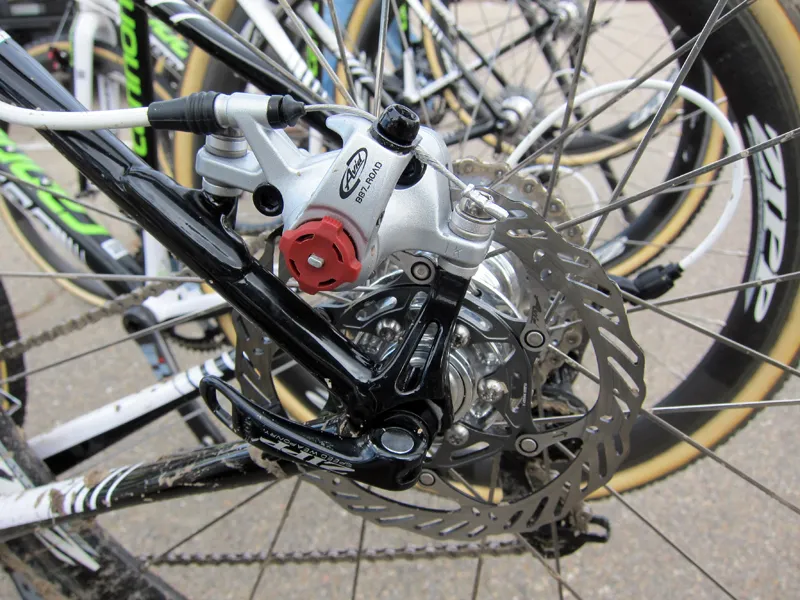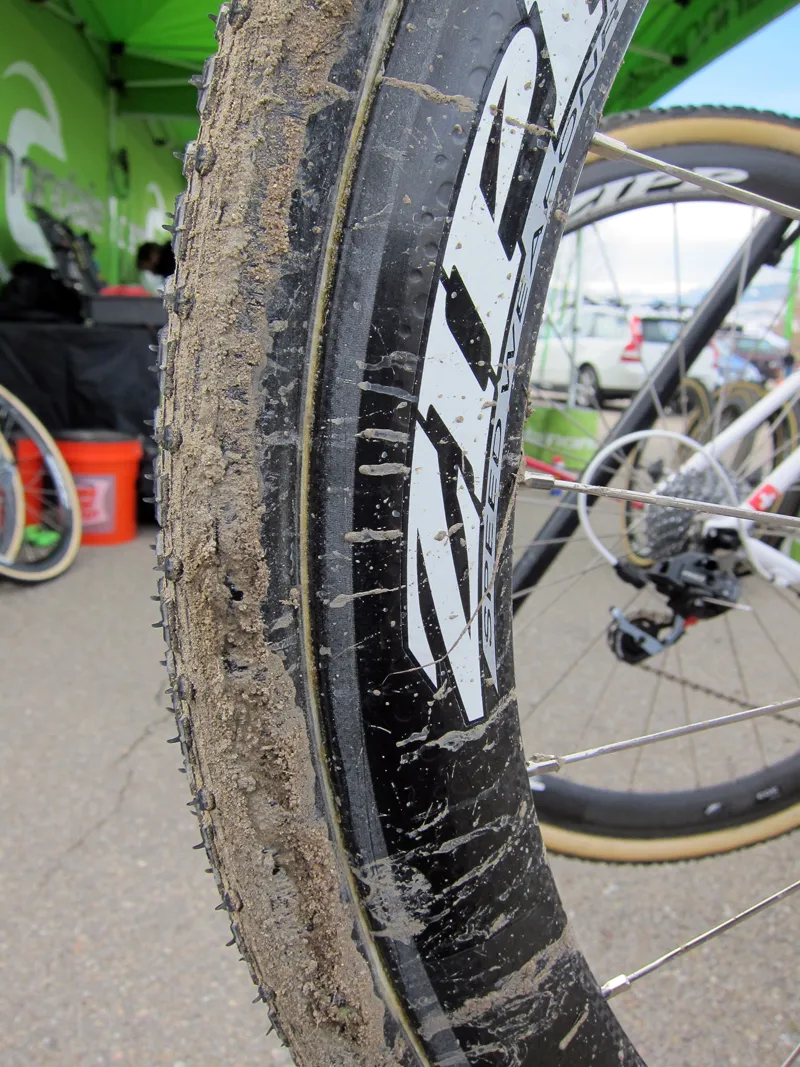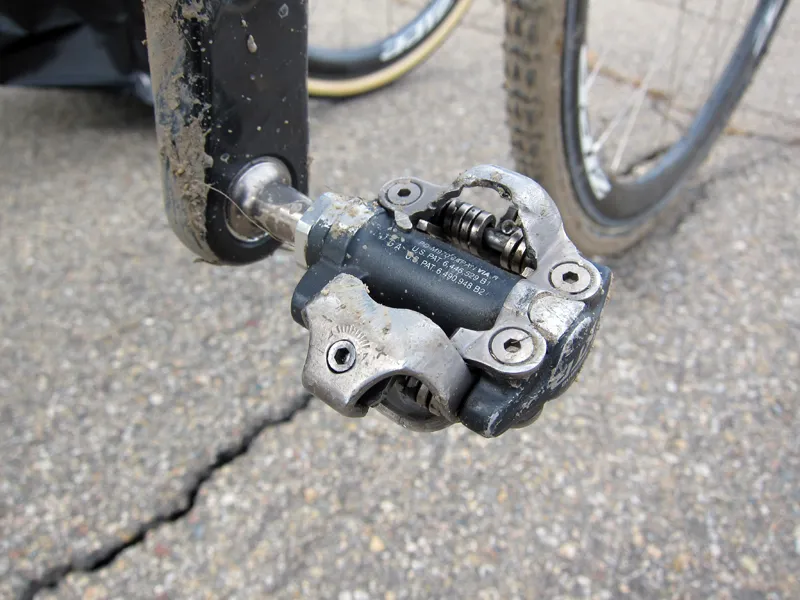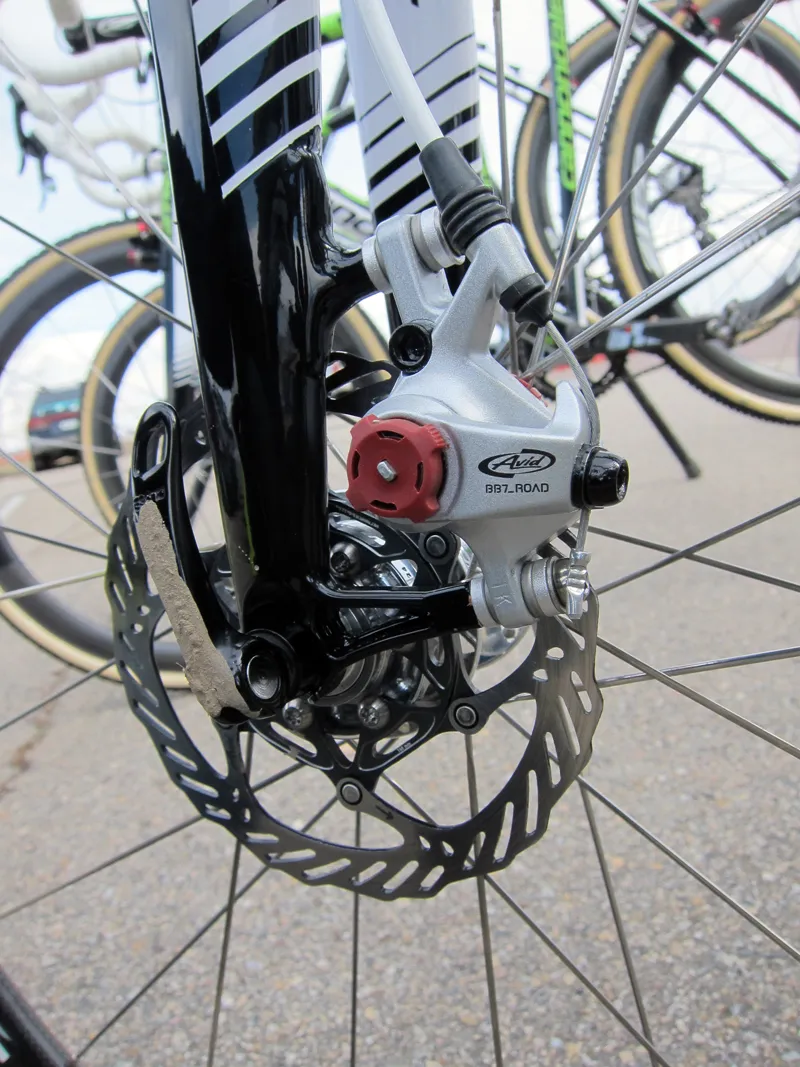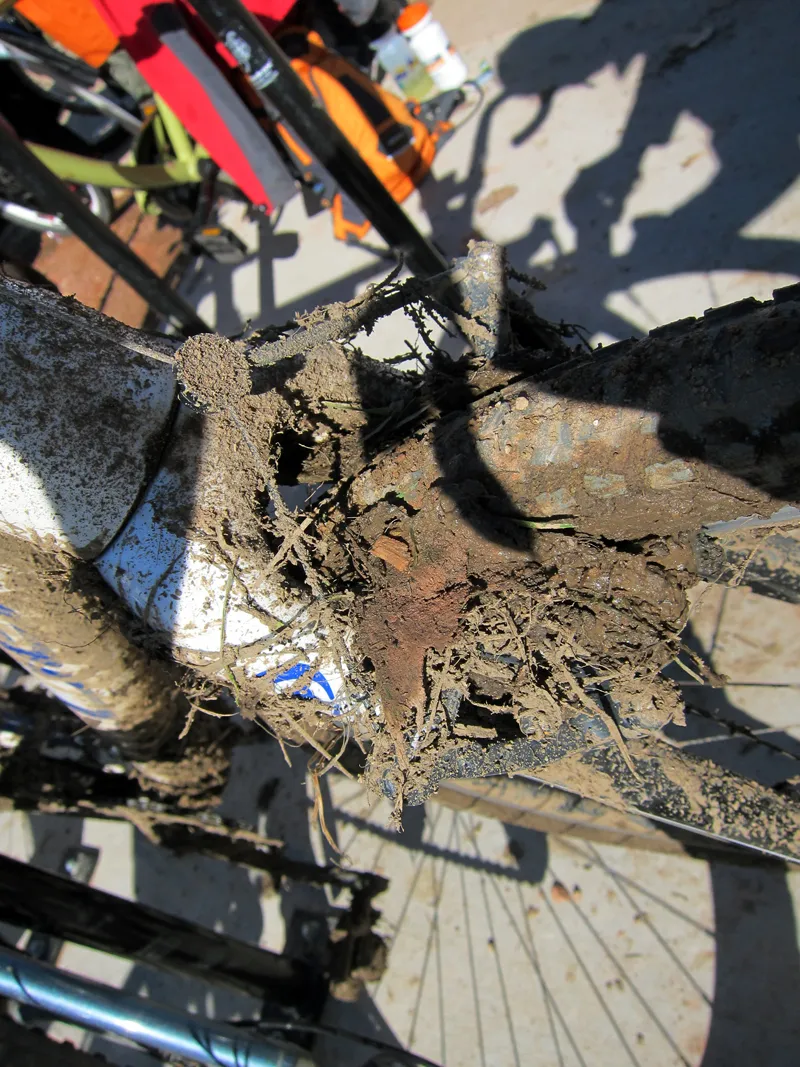This past weekend's UCI C1 and C2 cyclo-cross races in Boulder, Colorado brought out some of the sport's top talent, along with some high-end gear and some insight into how teams and pro riders manage their tires in varying conditions.
Saturday's race posed the geographically unique problem of goathead thorns – notoriously evil little buggers that ruin many racers' hopes of glory. Despite the very real threat of puncture, attitudes towards the use of preventative sealant were decidedly mixed. The relative proximity of the pit area (and a fresh bike) was one factor but most of the mechanics we spoke with said they simply don't like to use the stuff.
Maxxis-Rocky Mountain head mechanic Gary Wolff and Rapha-Focus mechanic Brian Dallas both occasionally use sealant in new tubulars, both to make the stock latex tubes a little less porous and also provide some insurance out on the race course. Others are more leery of injecting anything into a fresh high-end tire.
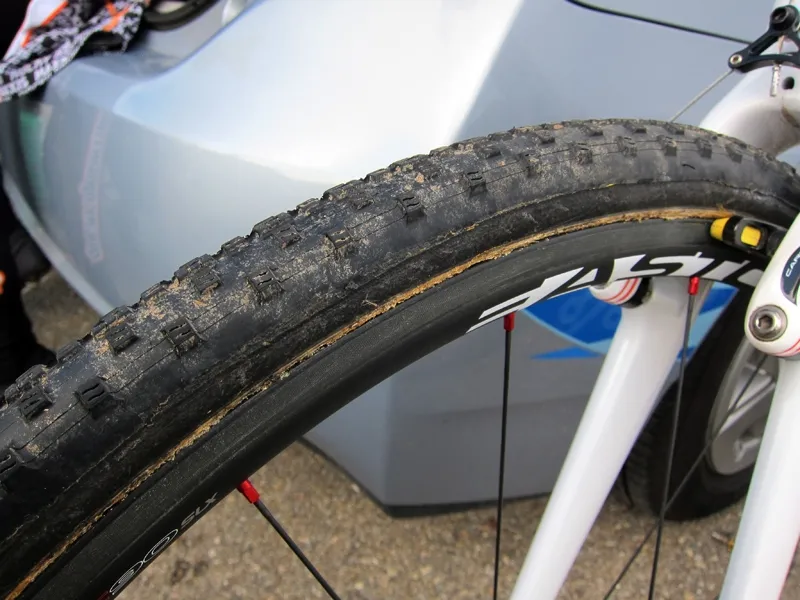
Geoff Kabush's (Maxxis-Rocky Mountain) mechanic, Gary Wolff, says he occasionally injects some Stan's sealant into the team's custom Dugast/Maxxis tubulars
For example, Ryan Trebon's mechanic, Dusty Labarr, told BikeRadar that he generally only uses sealant after a tire has punctured and Cannondale-Cyclocrossworld.com team manager Stu Thorne held the same opinion. "It screws up the valve stem and makes it difficult to get accurate tire pressure readings," Thorne said.
Post puncture, Thorne says he exclusively uses Effetto Mariposa Caffelatex in the team's Dugast tubulars, while Labarr cited Clement's pending release of their own sealant mixtures. According to Clement principal Donn Kellogg, the company are soon to release two formulas – one for flat prevention and one for repair. Not surprisingly, given who actually manufactures Clement's tubular tires, the sealants are essentially rebranded versions of Tufo formulas.
Tubulars or tubeless?
Sealant is an integral part of the equipment strategy for Jake Wells and the rest of the NoTubes 'cross team, however, with their conventional Kenda clincher tires and tubeless rims. Wells adds about 45ml of NoTubes sealant to every new tire installed and 30ml to each tire that has already been set up. The system seems to be reliable.
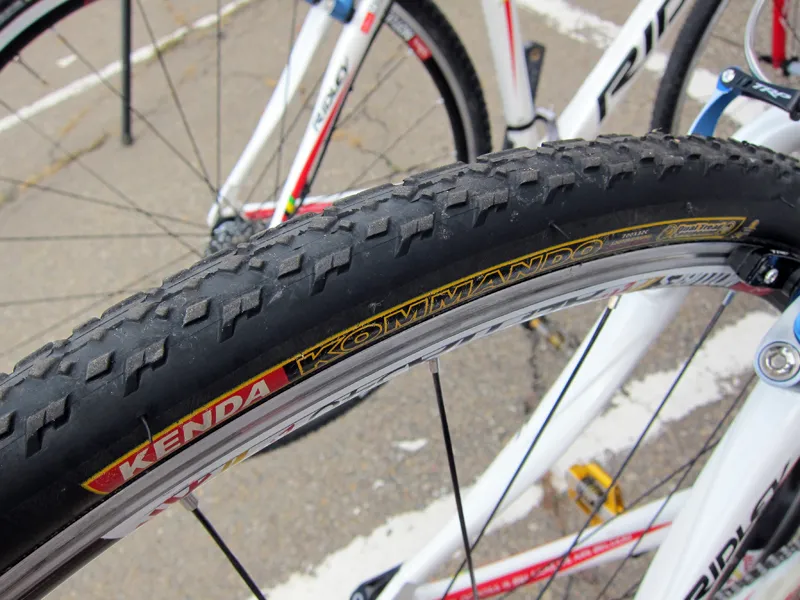
Stan's NoTubes Elite Cyclocross Team rider Jake Wells says he uses about 40cc of sealant for new clincher tires and 30cc for ones that had already been sealed up
"I was a little skeptical at first when the whole deal was coming together but I haven't had any issues burping or rolling any tires and that was definitely one of my biggest concerns," Wells told BikeRadar the day after the Boulder Cup. "I'm running the exact same pressures I've been running the last two years on tubulars. I don't run notoriously low pressure but I don't like my tires to be really foldy anyway."
Wells says he ran 27psi front and rear on Sunday's mixed-conditions course in Boulder's recently opened Valmont Bike Park but claims he's successfully run as low as 24psi up front – and some of his lighter female teammates regularly go as low as 22psi. He says tubeless tires are much more convenient in terms of race day equipment setup.
"It makes for a much more versatile setup, especially for someone who doesn't have a truckload of tires and wheels and options ready to go," he said. "For me this year, I bring two bikes and just extra sets of tires in my bike bag. You can usually find someone with a compressor if you need but we've had pretty good luck with putting the [Kenda] Kwickers on with a hand pump. On race day you can just wait and see what the conditions are going to do so you don't have to travel with four set of wheels."
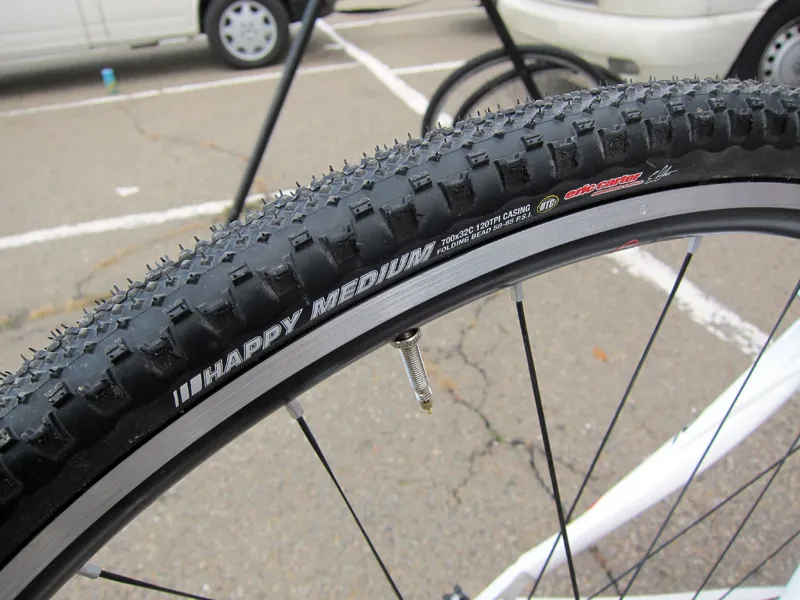
Wells says the team's Alpha 340 rims' shorter bead hook lets the tires balloon out a bit more than typical. However, the Kenda Happy Medium tires' pronounced side knobs can occasionally fall afoul of race officials.
Most pros will still prefer to stick with high-end cotton tubulars – especially as conditions worsen – for their uncanny ability to conform to the ground but as the NoTubes team seem to be demonstrating, tubeless is becoming a more viable option for amateurs.
When 33mm might really be 34mm
Sunday's race had both USA Cycling and UCI officials on hand, and both were measuring tire casing widths on the start line with federation-issued go/no-go gauges. The UCI version was a crude widget machined from a chunk of plastic while the USA Cycling gauge was much more convincing, made from two aluminum plates bolted around 33mm-long standoffs – and even machined with the official's name.

UCI officials use these rather crude-looking plastic gauges to determine if a 'cross tire is legal

USA Cycling's tire gauges are much more official looking, with machined aluminum construction and even the official's name etched on the outside
The idea behind each was simple: if the tire fits in the gauge, it's good to go. However, there apparently is still some interpretation of how the gauges should be used, particularly when the nuances of tread width versus casing width are considered. USA Cycling referree Randy Shafer told us that the rule was meant to prevent grievous abuses of tire size, so as long as the gauge could be squeezed on without much force, the tire was good to go.
We'll continue to monitor the situation as the season progresses. Interestingly, tires were only being checked as the riders were called up into the start grid. Pit bikes weren't being checked, as far as we could tell, and bikes weren't being checked after the race finish, either.
More tweaks for the Cannondale-Cyclocrossworld.com team bikes
Remember those new Cannondale SuperX Disc 'cross bikes we showed you the other day? As it turns out, Cannondale-Cyclocrossworld.com rider Tim Johnson tested the new bike on Saturday but didn’t end up racing on it on either day. Johnson told BikeRadar that he was really happy with the bike's braking performance overall but he was still going to need a bit more time on it before committing to using it in competition for a UCI C1 event.
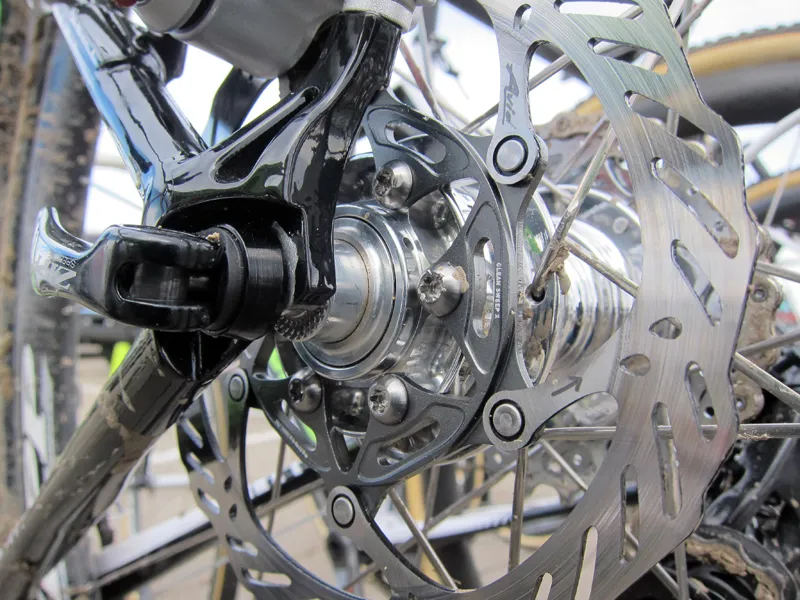
Cannondale-Cyclocrossworld.com offset some of the extra weight of Tim Johnson's disc-equipped bike with titanium hardware
New titanium rotor bolts and caliper hardware helped trim the total weight down even further from when we looked at the bike the Friday before the races but Thorne said it was more a matter of getting used to how differently it could be ridden. For one, he said the bike would "stand up" more in a corner under really hard braking but also that the more reliable braking allowed him to accelerate deeper into the corner than he was used to.
Thorne was busy this weekend hopping up the rest of the team bikes with custom green-anodized aluminum bits from team sponsors SRAM. The new pieces may not have lent any performance benefits to the Avid Shorty Ultimate brakes but they were a nice finishing touch to complete the pro look.

